#bamiyan
Explore tagged Tumblr posts
Text


Bamiyan, Afghanistan
© Mark Schlegel
216 notes
·
View notes
Text
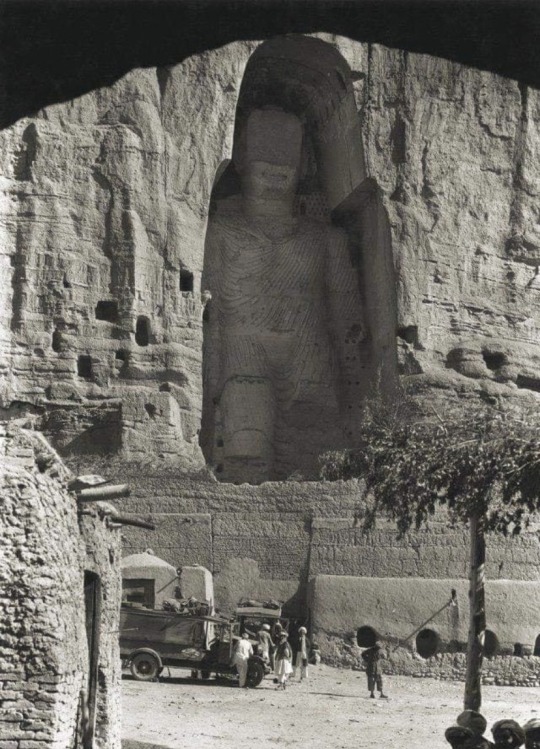
Giant Buddha, Bamiyan, Afghanistan. (c) 1931
#Afghanistan#afghan#bamiyan#buddha#buddha statue#buddha of bamiyan#buddhism#central asia#vintage#photography#own post
196 notes
·
View notes
Text
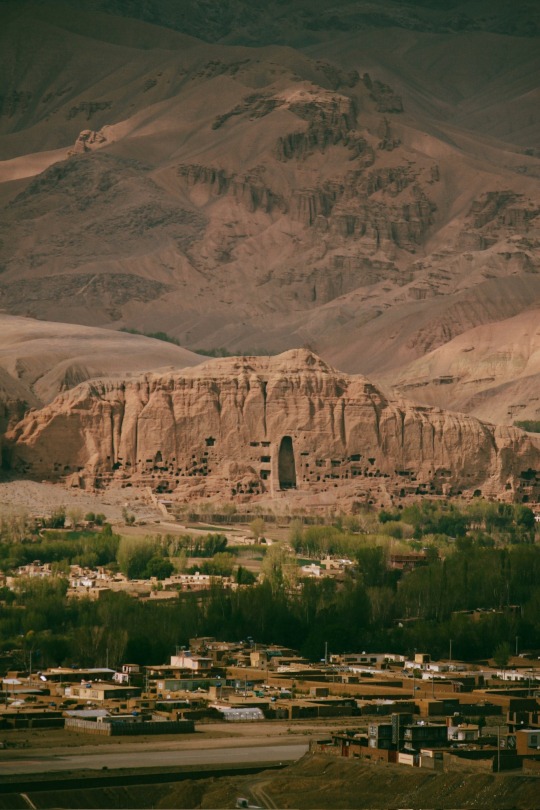
تو بامیان منی.
16 notes
·
View notes
Text



Bamiyan, Afghanistan, 1974 or so.
24 notes
·
View notes
Text
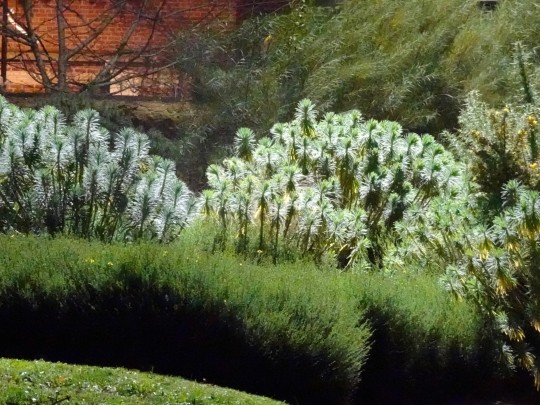


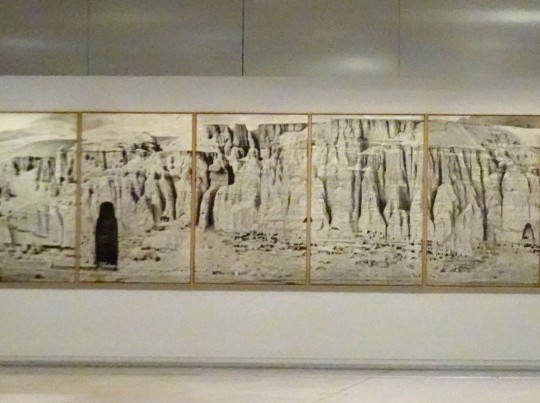
Il y a une petite quinzaine, je suis allé avec Julien et Katie, au Louvre-Lens. Ici, alternés, la sortie de l'expo permanente, "la Galerie du Temps" avec cette photo panoramique de Bamiyan, hélas sans ses bouddhas, et les jardins riches en euphorbes.
3 notes
·
View notes
Text
The Silk Road Tours Experience: Afghanistan’s Role in World History

The Silk Road was a network of ancient trade routes stretching from Asia through the Middle East to Europe that played a transformative role in world history. This famous pathway had been used to exchange goods, ideas, religions, and cultures and formed the backbone of international trade for centuries. Situated at the heart of this energetic network was Afghanistan, a country rich in strategic location and cultural heritage. The cities of Balkh and Bamiyan formed critical nodes on the Silk Road that shaped economic, cultural, and spiritual transactions in this historical context.
This article discusses the Afghanistan of the Silk Road epoch with special emphasis on significant locations such as Balkh and Bamiyan through which history continues to influence contemporary society and, hence, the world.
Afghanistan: The Crossroads of Civilizations
Afghanistan was at the crossroads of Asia, the Middle East, and Central Asia, making it a natural conduit for trade and cultural exchange. Traders from China, India, Persia, and the Mediterranean passed through its valleys and mountain passes, bringing with them silk, spices, ceramics, and precious stones. In return, they carried Afghan lapis lazuli, horses, and saffron to distant markets.
Beyond goods, the Silk Road was also a route for the exchange of knowledge, technology, and religion. Buddhism, Zoroastrianism, and later Islam flourished in Afghanistan, blending with local traditions and creating a rich tapestry of cultural diversity.
Key Historical Sites Along Afghanistan's Silk Road
1. Balkh: The Mother of Cities
Balkh is known as the "Mother of Cities." This city in northern Afghanistan was an important center of trade and a focal point of religion and culture. It is one of the oldest continuously inhabited cities in the world.
It was a very important city in the ancient Bactrian kingdom and later became an important center for spreading Zoroastrianism and Buddhism. It was also a crossroad for the caravans moving between Central Asia, Persia, and India.
•Cultural Legacy:
It was the habitat of the legendary poet Rumi and witnessed architectural wonders, like the Green Mosque and ancient stupas of Buddhism. Most of what is left of its historical architecture is in ruins, but its heritage as the cradle of civilization lives on.
2. Bamiyan: The Buddhist Heartland
Situated in central Afghanistan, Bamiyan was a vital stop on the Silk Road and an important center of Buddhist learning and art. It flourished as a crossroads between culture and the spirit due to its strategic location.
•The Buddhas of Bamiyan:
Bamiyan housed two giant Buddha statues carved into the cliffs during the 6th century. The tallest in the world, they represented the region's function in the spread of Buddhism in Asia. Although destroyed tragically in 2001, it remains a UNESCO World Heritage Site and a monument to the culture of the region.
• Band-e Amir National Park:
Near Bamiyan lies Band-e Amir, Afghanistan's first national park, featuring a series of stunning blue lakes surrounded by rugged cliffs. It was a natural wonder, attracting travelers and traders; it served as a serene respite on the Silk Road.
3. Herat: The City of Art and Knowledge
Herat is a city in western Afghanistan which was a key city on the Silk Road and flourished in the Timurid Empire as a center of art, architecture, and intellectual thought.
• Architectural Splendor:
Herat's Friday Mosque is one of the finest examples of Islamic art, decorated with beautiful blue tiles. The city's citadel, believed to have been founded by Alexander the Great, is a great testimony to its historical significance.
•Cultural Interaction:
Herat was a cultural melting pot where Persian, Indian, and Central Asian influences merged to create an artistic and intellectual heritage unique to this city.
4. Kandahar: A Gateway City
Kandahar, Afghanistan, was another key trading center along the Silk Road, which connected trade networks from India and the Arabian Peninsula to Central Asia.
•Historical Function:
It was an important passage for the transportation of goods and ideas where traders and travelers entered. This city is also significant because that is where modern Afghanistan was founded by Ahmad Shah Durrani in 1747.
5. The Hindu Kush Mountain Passes
The rugged Hindu Kush mountains presented both a challenge and an entrance for Silk Road travelers. Famous passes, like the Salang Pass and Khyber Pass, connected Afghanistan to the rest of the neighboring areas. It enabled the free flow of goods and people.
•Strategic Importance:
These mountain passes connected Silk Road cities and also served as very important military and trade routes for empires to dominate the area.
Afghanistan Contributions to Global Trade and Culture
Afghanistan's role in the Silk Road was more than just a transit country. It was an active participant in the international exchange of goods, ideas, and cultures:
1. Lapis Lazuli Trade:
Afghanistan Badakhshan mines provided lapis lazuli to ancient civilization such as Egypt and Mesopotamia, which used this stone for their jewelry and art.
2. Spread of Buddhism:
The development and diffusion of Buddhism in the heart of Central Asia and toward China were greatly facilitated through Afghanistan's monasteries and stupas. The art of these Afghan origins influenced the world way beyond Afghanistan's borders regarding the teachings of Buddhism.
3. Cultural Maturity:
The interaction of multifaceted cultures on Silk Road enriched Afghanistan's cultures to create a unique type of art, architecture, as well as their beliefs.
4. Carpet Weaving:
Afghan carpets, with their intricate designs and high craftsmanship, became a hot item in Silk Road markets and remain the hallmark of Afghan culture to this day.
The Legacy of the Silk Road in Modern Afghanistan
Although the ancient Silk Road no longer functions as it once did, its legacy continues to shape Afghanistan. Efforts to revive trade routes, such as China's Belt and Road Initiative, highlight the enduring importance of Afghanistan's location.
Tourism around Silk Road heritage sites also serves as an avenue to celebrate and preserve the rich history of Afghanistan. Challenges abound, but cultural tourism promotional initiatives aim to reconnect Afghanistan to the world.
Visiting the Silk Road Today
This experience of the Silk Road for the traveler in Afghanistan is incomparable. Walking in the footsteps of ancient traders and monks, one gets to understand how in this world, cultures converge, ideas flourish, and sites such as Balkh, Bamiyan, and Herat deepen that connection to history and enable them to witness the resilience and beauty of Afghanistan.
Such a journey would start with the safety and richness of being accompanied by a trusted Afghanistan tour operators like Afghan Logistics & Tours Pvt. Ltd. They have in-depth knowledge of Afghanistan's unique landscapes and cultural treasures that make the Silk Road come alive for modern explorers.
Afghanistan's role in the Silk Road is a testament to its historical significance as a bridge between civilizations. From the bustling bazaars of Balkh to the serene cliffs of Bamiyan, the country's landmarks tell a story of trade, culture, and spirituality that shaped the ancient world.
Today, visiting the Silk Road sites of Afghanistan means not only passing through history but also experiencing a land whose legacy endures in an enduring testament of East to West. Through Afghan Logistics & Tours Pvt. Ltd., travelers can safely experience the wonders of Afghanistan's Silk Road heritage and immerse themselves in timeless beauty.
#AncientCivilizations#SilkRoad#AfghanistanTravel#Balkh#Bamiyan#Herat#AfghanHistory#CulturalHeritage#HistoricalSites#AfghanistanSilkRoad#AncientTradeRoutes#BuddhasOfBamiyan#BandEAmir#AfghanTourism#WorldHistory#HinduKushMountains#TravelAfghanistan#AfghanLogisticsAndTours#SilkRoadCulture#TradeAndCulture#BuddhismSpread#LapisLazuliTrade#AfghanArchitecture#EcoTourismAfghanistan#UNESCOWorldHeritage
0 notes
Text
Time Patrol. Afghanistan 1953
Kabul, 1953. Long before the many wars. My father Cyril was Air France General Manager in Pakistan. Karachi was the road to the Far East. Paris sent him to Kabul to investigate the possibility of opening a line to Afghanistan. My parents had lived in Pakistan for 6 years already. They spoke Urdu fluently. He knew the region. He took my mother’s 8mm camera. Shot a film which my mother edited, and…

View On WordPress
0 notes
Text
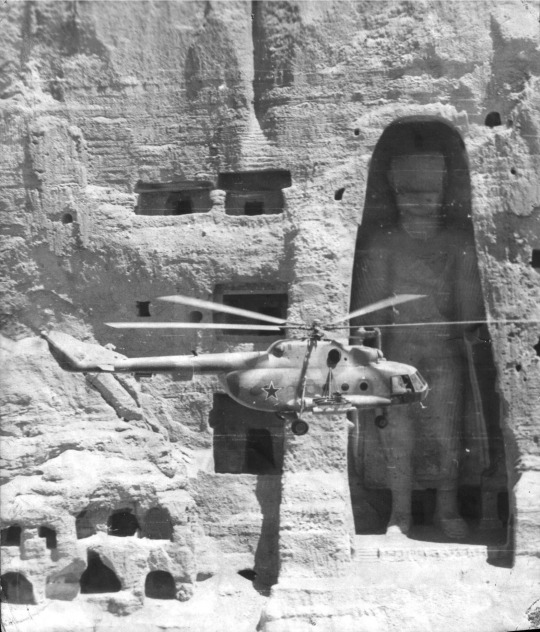
A Soviet Mi-8 flies past one of two Bamiyan Buddhas in Afghanistan in 1980, dating from the 6th century; both were later destroyed in 2001 by the Taliban regime after declaring them idols.
41 notes
·
View notes
Text
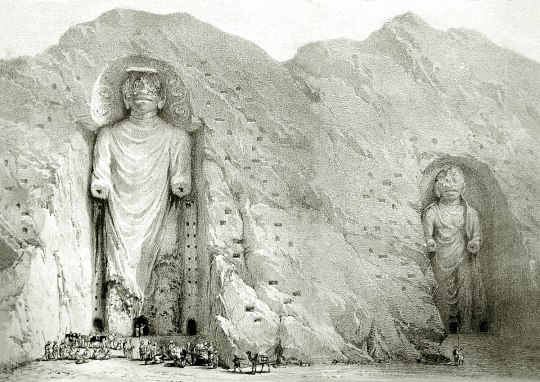
18 notes
·
View notes
Text
The Buddhas of Bamiyan
The destroyed Buddha statues of Bamiyan - Afghanistan
One of the thirty-four provinces of Afghanistan, Bamyan ( The Place of Shining of Light ) is located in the central highland of Afghanistan. This largest province in Hazarat region is divided in six districts. Bamiyan is a home for various famous historical and cultural sites. Some of them are Band-e Amir National park, Dara-i-Ajhdar, Gholghola, the ancient towns Zakhak, Gaohargin, and the statues of standing Buddha which was destroyed in 2001. Read more at: Bamiyan, the destroying of the Buddha statues of Bam - Bamiyan - Afghanistan

1 note
·
View note
Text
Buddhas of Bamiyan


In the name of Allah, the Beneficent, the Merciful
33:72 Surely We offered the trust to the heavens and the earth and the mountains, but they refused to be unfaithful to it and feared from it, and man has turned unfaithful to it. Surely he is ever unjust, ignorant —



The wind cannot overturn a mountain. Temptation cannot touch the man Who is awake, strong and humble, Who masters himself and minds the law. - Gautama Buddha
youtube
#Buddhas of Bamiyan#Afghanistan#Buhdist#maulana muhammad ali#men and mountains#holy quran#Gautama Buddha#turn to stone#Youtube
0 notes
Text
Saiyuki: origini parte 2
Come detto nel post precedente,l'opera di Wu Cheng'en è ispirata a sua volta ad un altro testo le Testimonianze sulle regioni occidentali del Grande Tang. Il libro venne scritto nel 646 d.C. da Bianji un discepolo di Xuanzang e descrive il viaggio del giovane Xuanzang da Chang'an (oggi Xi'an) verso l'Asia Centrale e forse anche in Asia meridionale tra il 629 e il 645 d.C. Il libro è costituito da 120.000 caratteri cinesi ed è suddiviso in 12 volumi nei quali è descritta la geografia, le terre, il clima, i trasporti marittimi, i prodotti locali,le persone, la lingua, la storia, gli usi e costumi, la religione, la cultura, la politica e via dicendo dei territori occidentali quali Xinjiang, Persia, Tajikistan, Bangladesh, Pakistan, India, Sri Lanka ecc. (ho messo i nomi odierni di alcuni dei territori occidentali visto che Tajikistan, Uzbekistan non esistevano all'epoca). L'opera ha un grande valore storico e archeologico,ad esempio fornisce informazioni sul fatto che a quel tempo esisteva già una cultura buddhista in Afghanistan nonché la prima testimonianza letteraria dell'esistenza dei Buddha di Bamiyan:Buddha di Bamiyan:

foto risalente al 1931 dal sito: http://www.uspolicyinabigworld.com/2009/10/29/us-diplomat-delivers-odd-resignation-in-afghanistan/bamiyan_buddha/
L'opera è importante anche per la storia indiana tant'è che gli archeologi lo usano per riempire alcuni vuoti della storia indiana. Il libro è noto anche per avere un'esatta descrizione delle distanze e dei luoghi dei diversi posti ed è servito anche come linea guida per lo scavo di molti importanti siti quali Rajagrha,il tempio a Sarnath,Ajanta,le rovine del monastero di Nalanda nel Bihar e le rovine di Vasu Bihar dell'antica città di Pundra.
#saiyuki#viaggio in occidente#buddha di Bamiyan#afghanistan#saiyuki: origini#vecchio post#Italian post#kazuya minekura
0 notes
Text
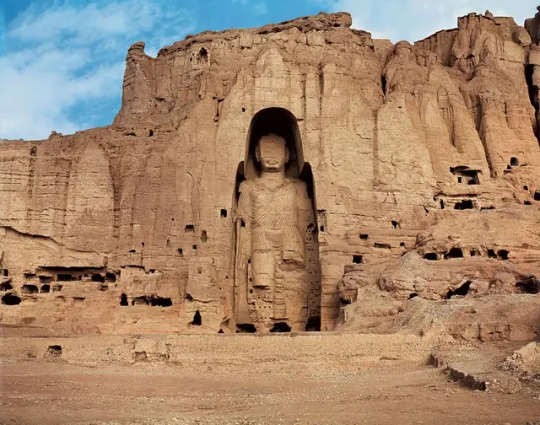
The 6th century Buddha of Bamiyan in Afghanistan Before the Taliban blasted it into rubble.
2K notes
·
View notes
Text

Bamiyan, Afghanistan, 2002 - by Steve McCurry (1950), American
132 notes
·
View notes
